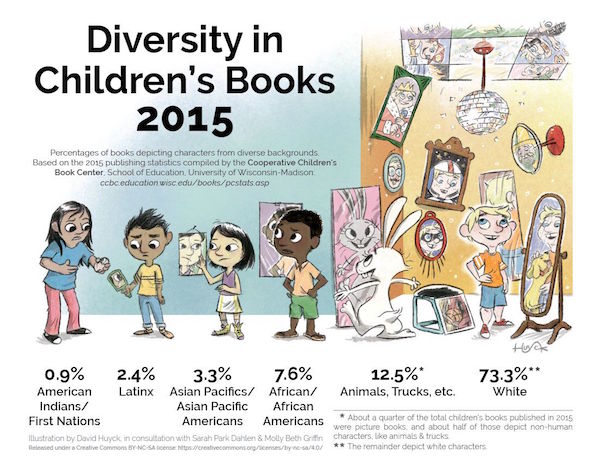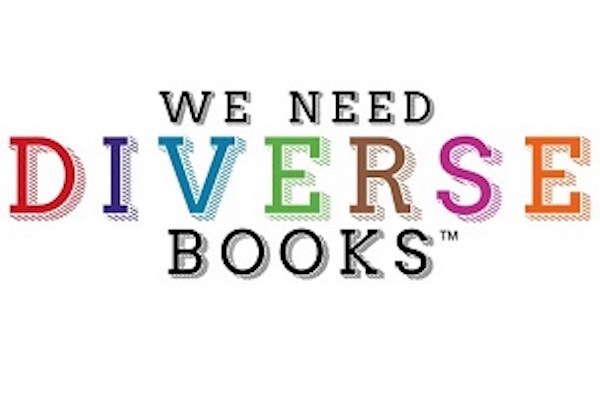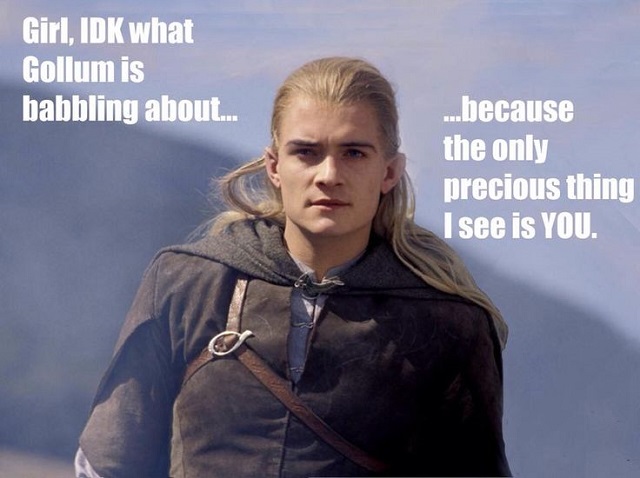Discussions over the last few years have raised awareness about the lack of diverse books in children’s literature. However, much more needs to be done. Recently, this infographic created by David Huyck in partnership with Sarah Park Dahlen and Molly Beth Griffin was released displaying astonishing data about race representation in children’s book publishing.

Source: Teaching For Change
As shown here, there are more books published about non-human characters than any category of people of color, with 12.5% of children’s books depicting non-human characters like animals and vehicles.
These numbers become even more disturbing when compared to population data. According to the United States Census Bureau, the population in 2015 for Black or African Americans was 13.3% and Hispanic or Latino was 17.6% of the total population. As you can see, only 7.6% of African American and 2.4% of Latinx characters are represented in children’s literature. This is a gross underrepresentation of these populations.
The impact of this disparity is felt across our culture. Not only are children of color being denied access to literature that reflects their culture, but they are not seeing characters in contemporary book settings that look like they do. In addition, often when historical books are published, the content is whitewashed about the true treatment of various races in our country’s history. As described here in an article in Mother Jones:
“A Birthday Cake for George Washington—written by Ramin Ganeshram and illustrated by Vanessa Brantley-Newton, both women of color—told the story of Hercules, the late president’s enslaved household cook, but glossed over the horrors of captivity and consigned to an author’s note the fact that Hercules eventually ran away (on Washington’s birthday, no less).”
The negative impact isn’t only on children of color when children’s books rarely reflect characters of color. White children who are not exposed to books with characters of other races are denied the opportunity to see people of color as main characters in stories. Allowing white children to read books where children of color are the heroes can help heal the systemic racism in our country by creating understanding and empathy in a new generation.
As our country struggles with questions of police shootings of unarmed black men, immigration reform in the 2016 Presidential election, and the Native American protest of the Dakota Access Pipeline, it is more important than ever for our children to see people of color celebrated and normalized in literature. As the research shows, reading books helps create empathy and empathy helps break down barriers.
The good news is that grassroots organizations like We Need Diverse Books and Multicultural Children’s Books Day are bringing attention to this issue. We Need Diverse Books’ mission statement is:
“Putting more books featuring diverse characters into the hands of all children.”

Source: Ya Interrobang
How will this mission be accomplished? According to the Cooperative Children’s Book Center three ways to make this a reality include:
- A commitment from large and small publishers to intentionally produce authentic multicultural literature
- Establish children’s literature awards to recognize books by and about people of color
- Purchase and share books by and about people of color with our personal and professional contacts
You can be part of this much needed change by raising awareness and supporting diverse books.
YouTube Channel: littlesikhs
Featured image via My Family Builders
h/t Sarah Park



